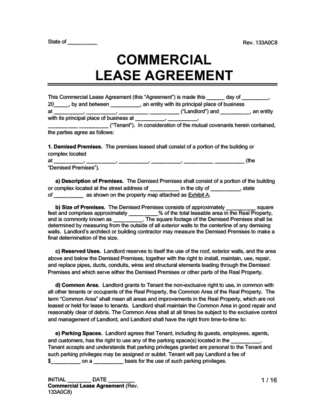
Use our free Commercial Lease Agreement to rent business property to a tenant.

Updated June 17, 2024
Written by Josh Sainsbury | Reviewed by Susan Chai, Esq.
A commercial lease agreement is a legal document that allows a tenant to rent a property, such as an office, store, or warehouse, for business purposes. It outlines the tenant’s right to use the property in exchange for rent and possibly other fees like operating costs, taxes, maintenance, and parking. The agreement details the rights and responsibilities of both the landlord, who owns the business property, and the tenant.
As long as the tenant adheres to the terms specified, they are permitted to conduct business on the premises. Additionally, it’s common for a commercial lease application to be completed prior to finalizing the agreement. This application process helps the landlord assess the potential tenant’s creditworthiness and suitability for the commercial space.
A commercial lease agreement should cover essential details, including:
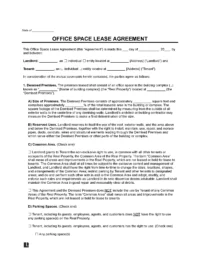
Use this template if you’re renting out an office space where the tenant will operate a business.
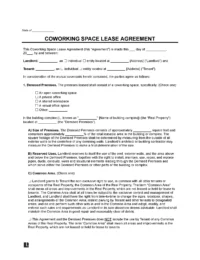
Use a coworking space lease agreement to outline the terms and conditions under which a tenant rents a workspace from a landlord.
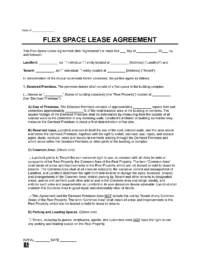
Use to rent a multi-purpose workspace.

Outlines the terms for renting a garage parking space.

Use to rent a space for an event.

Use our Salon Booth Rental Agreement template to enable a stylist to temporarily rent a space in your salon.

Enables massage professionals to lease a booth and operate independently.
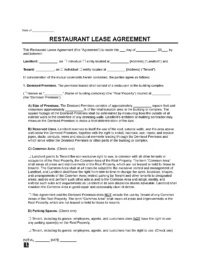
Use it to lease out your restaurant space to tenants or culinary professionals.
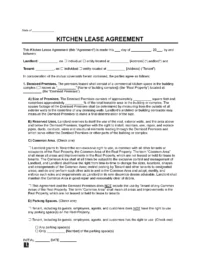
Use it to easily rent out kitchen space to tenants or food professionals.
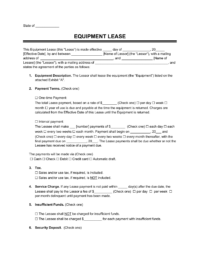
Use an equipment lease agreement to enable another party to temporarily rent your equipment.
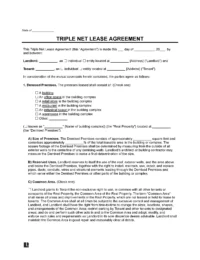
Use to require the tenant to pay all property expenses, including real estate taxes, building insurance, maintenance, and rent and utilities.
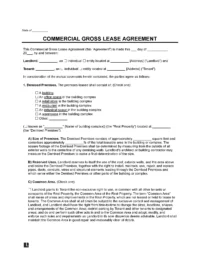
Use to establish a landlord-tenant relationship in commercial real estate, covering all costs including taxes, insurance, and maintenance to prevent unforeseen expenses for businesses.
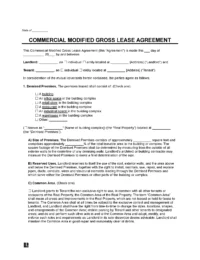
Use to balance landlord and tenant interests in commercial leases by sharing property expense responsibilities through a combination of gross and net lease elements.
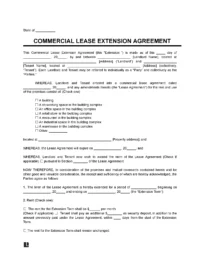
Use it to extend an existing lease beyond its original end date.
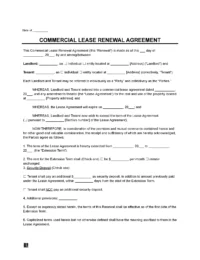
Use it to effortlessly renew the lease for a commercial property.

Let a tenant rent their leased property to a subtenant.
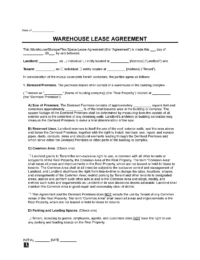
Use it to rent a warehouse to a business tenant.
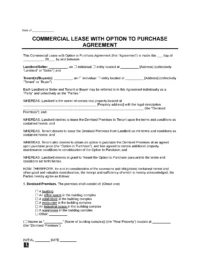
Use to allow tenants to rent and potentially purchase their ideal commercial property, providing flexibility and a path to ownership.
There are four main types of payment structures in commercial lease agreements based on how the tenant pays base rent and operating expenses.
The rental rate includes all property operating expenses in a full-service or gross lease. Operating expenses such as utilities, maintenance, and real estate taxes are already factored into the rent.
However, the landlord can add clauses to reserve the right to pass down any future increases in operating expenses to the tenant.
In a net lease, none of the operating expenses are included in the rental rate.
Therefore, in addition to the base rent, the tenant must also pay its pro-rata portion of the three “net” operating expenses – property taxes, property insurance, and standard area maintenance (CAM).
A modified gross lease (or modified net lease) is a hybrid of gross and net leases. In a modified gross lease, the landlord and the tenant negotiate and share the operating expenses.
Usually, the tenant is responsible for the base rent and CAM, and the landlord handles the property taxes and insurance.
Sometimes, the tenant pays base rent only at the beginning of the lease and then pays a portion of the operating expenses later.
In a percentage lease, the tenant pays the base rent on the property and a monthly percentage of the gross revenue from the business operating the rented space.
Industrial real estate mainly encompasses properties used for making, storing, or shipping goods, and they generally fall into three categories: manufacturing, storage and distribution, and flex space.
Many industrial properties can have multiple uses. For instance, a company might use a single large facility for assembling and distributing products and researching product improvements. In such cases, the property is usually classified based on its primary function.
Office spaces are categorized into three classes, known as Class A, Class B, and Class C, depending on their appearance, age, amenities, and building infrastructure.
A prime location near transportation and business districts is essential. Moreover, the availability of amenities like parking, fitness centers, and modern technology infrastructure enhances the appeal of office spaces.
Retail properties are places where businesses sell goods or services to consumers. They can take the form of shopping centers, malls, stores, or restaurants.
Leasing a commercial property involves several steps, from deciding how to market the property to finalizing the lease agreement. Follow this step-by-step guide to navigate the leasing process effectively.
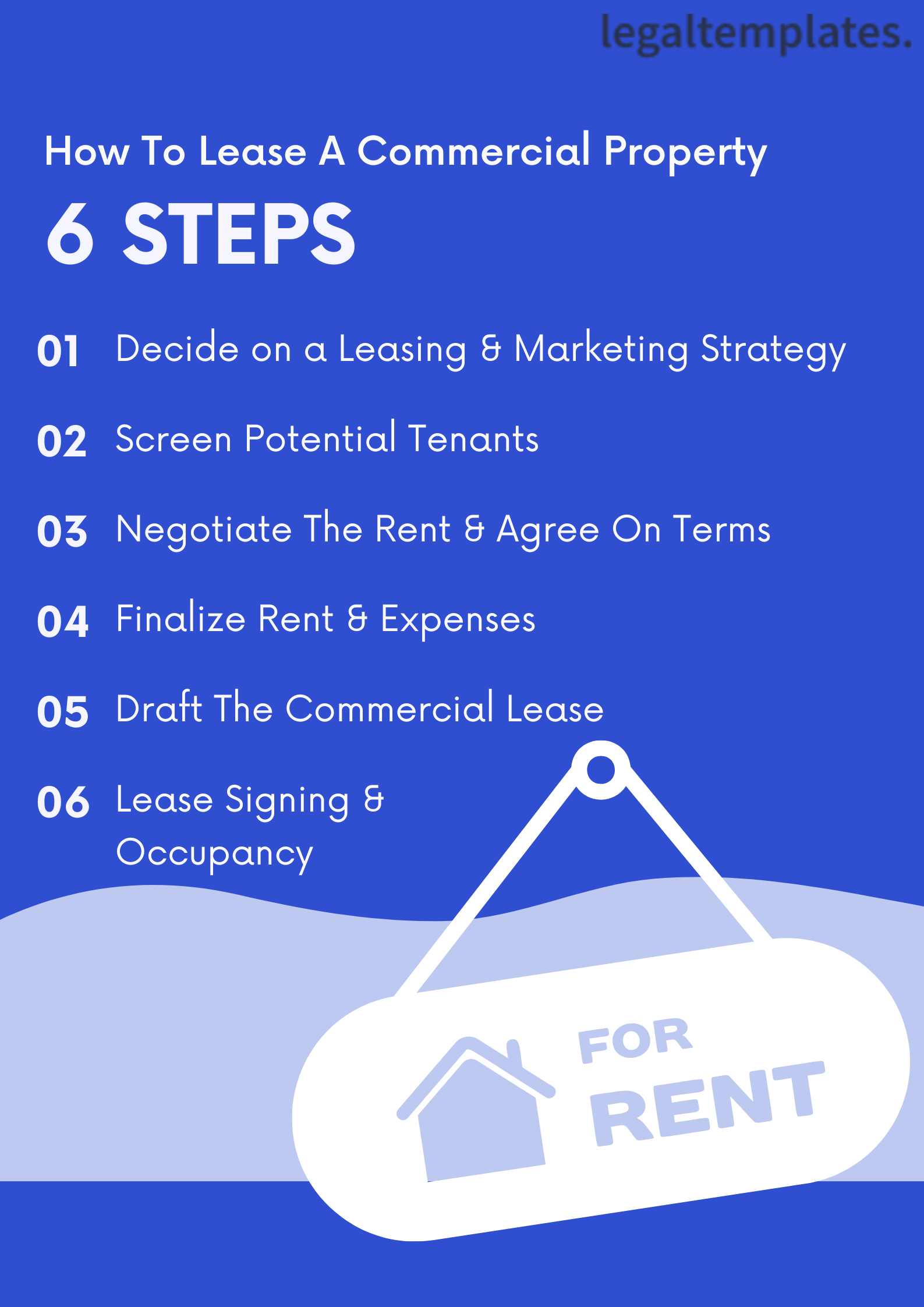
You can choose between hiring a broker to assess your property’s value, listing it, managing negotiations, or leasing the property yourself.
Use online platforms like LoopNet and Crexi for visibility. Regardless of the method, be ready to provide detailed information to prospective tenants and arrange property showings.
To ensure tenant reliability, request the following:
Discuss rent, typically calculated per square foot, taking into account common area maintenance expenses, real estate taxes, insurance, and specific landlord improvements.
Once a mutual agreement is reached, draft a commercial letter of intent to outline significant terms, setting the stage for the formal lease agreement.
Set the commercial rent based on a price per square foot annually. Discuss with the tenant who will bear the property expenses, such as insurance, taxes, and maintenance. This decision affects how the property is marketed and the lease is negotiated .
Have a qualified individual draft the commercial lease, meeting all legal requirements and clearly outlining responsibilities. Accurately measure your commercial space to ensure correct listing information and rent calculation.
Complete the leasing process by signing the lease, with the tenant taking occupancy on the agreed start date. The tenant is then responsible for monthly rent payments and maintaining the property as per the lease terms.
If you’re looking to lease a commercial property for your business, learn about the commercial lease process as a tenant.
After covering the basics such as landlord and tenant information, lease term, premises details, cost, and usage guidelines, it’s also important to delve into the following aspects to ensure a comprehensive agreement:
Yes, if the commercial property tenant operates a business open to the public and hires more than 15 people, the ADA applies and requires doors to be widened and ramps installed.
Ensuring ADA compliance in commercial properties involves both landlords and tenants, but the specifics can vary based on lease agreements. Generally, landlords are responsible for the accessibility of common areas and the structural aspects of the building.
Tenants, on the other hand, must ensure their leased spaces are accessible and comply with ADA standards, which might include modifications like widening doors or installing ramps. The allocation of responsibilities and costs for these modifications should be clearly outlined and agreed upon in the lease agreements.
Both parties must work together to ensure the property meets ADA requirements, safeguarding accessibility for all customers and employees.
Before you write your agreement, indicate the state you are contracting in.

Effective Date. Provide the effective date of the agreement.

Landlord Information – Enter the landlord’s full name or company name, whether the landlord is an individual or entity, and the landlord’s address.
If the landlord is a company, provide the full name and title of the company’s representative who will sign the agreement.
Tenant Information – Provide the tenant’s full name or company name, whether the tenant is an individual or entity, and the tenant’s address.
If the tenant is a company, write the full name and title of the company’s representative who will sign the agreement.

Demised Premises – Specify the type of commercial property being leased. If none of the options provided describe the property type, you can write one in.
If the commercial building or complex has a name, give that name (e.g., Westfield Mall). Provide the street (physical) address of the commercial property.
Include a suite number if applicable.
You can also choose to include a map of the property, which will be attached to the end of the agreement as Exhibit A.
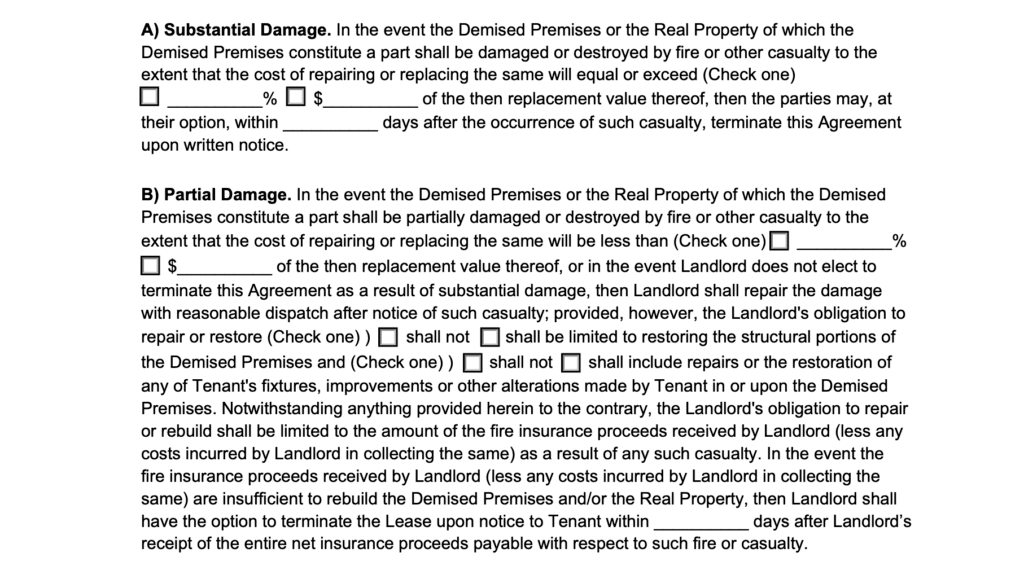
Size of Premises – Enter the approximate number of square feet of property. You can calculate the square footage by multiplying the length by the width. Provide the approximate percentage of the property that is the total leasable area in the building or complex.
Common Areas – Indicate whether or not the demised premises includes common areas.
Parking Spaces – State what kind of parking privileges the tenant may use, if any. If parking privileges exist, specify whether or not they include any parking spaces or only a specific number.
You can also write additional information, such as where the parking spaces are located, whether or not the tenants can assign or sublet their parking spaces, and whether or not tenants must pay a fee to park.
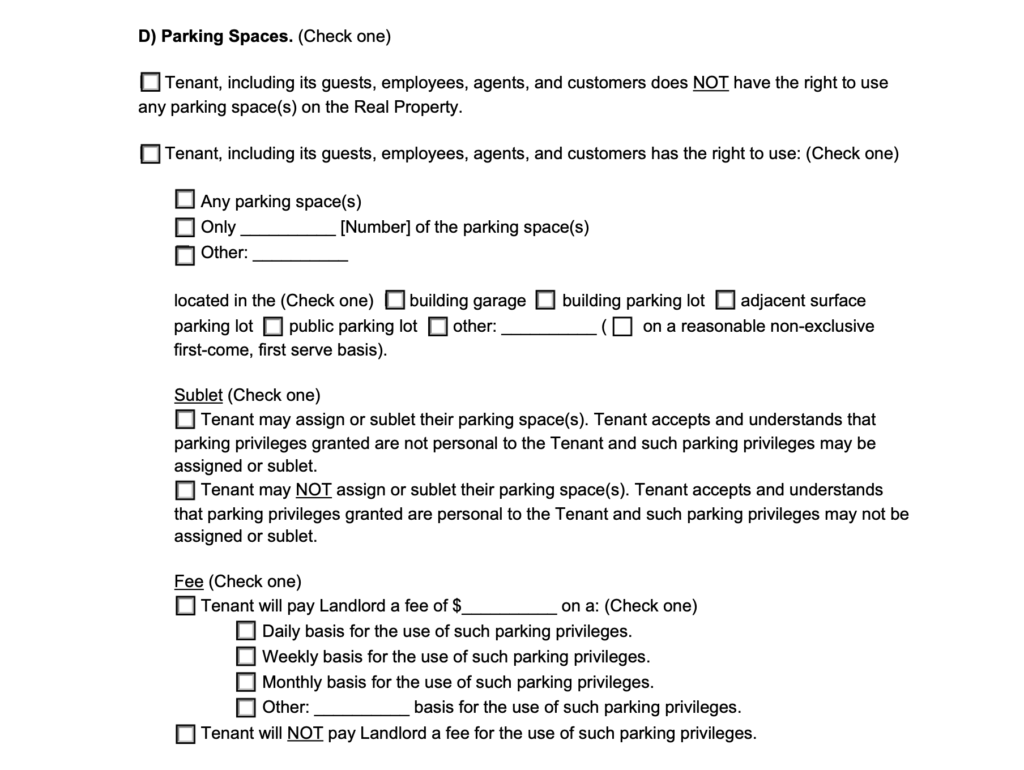
Storage Facilities. Specify whether or not the tenant has the right to storage facilities. If yes, describe the storage facilities and state whether or not the tenant must pay a fee for storage. 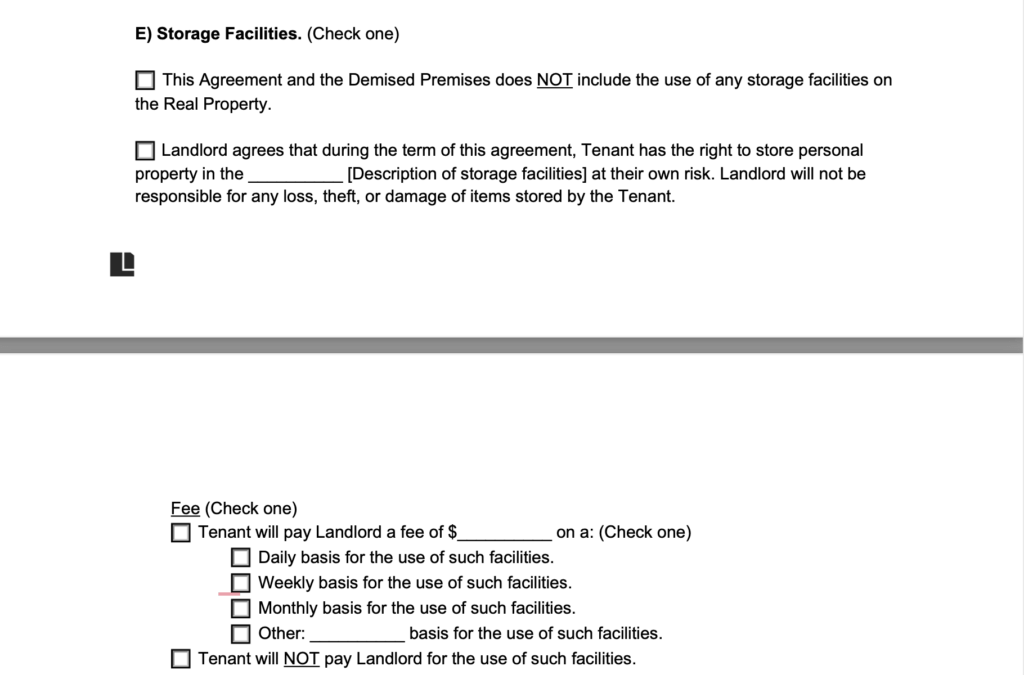
Term of Lease – Provide the start and end date for the lease term. The term is the length of time the tenant will rent the space.
Renewal – Indicate whether or not the tenant may renew the lease. If yes, state the number of years for the renewal term.
Also, specify whether or not the rent will increase if renewed. If yes, state whether the base rent will increase by a percentage or dollar amount.

Lastly, provide the number of days before the end of the lease that the tenant must give the landlord written notice of renewal.
Base Rent. Specify the dollar amount of the base rent (starting cost) and how often the tenant will pay the rent (i.e., monthly or annually).
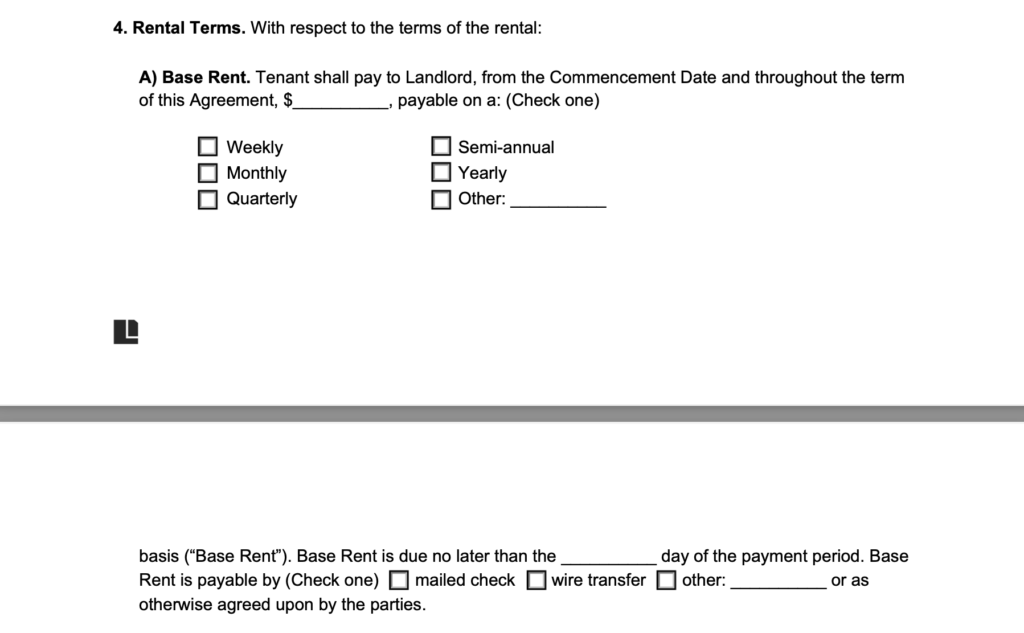
Additionally, state the day of the payment period that rent is due (i.e., 1st day of the month or 5th day of the quarter) and the payment method.
Operating Cost. Indicate whether or not the base rent includes any portion of the building’s operating costs. If not, state the monthly amount the tenant must pay for a proportionate share of the operating expenses.
Specify the maximum percentage of the total operational costs for the tenant’s share and the percentage of the expenses reserved for significant repairs and renovations.
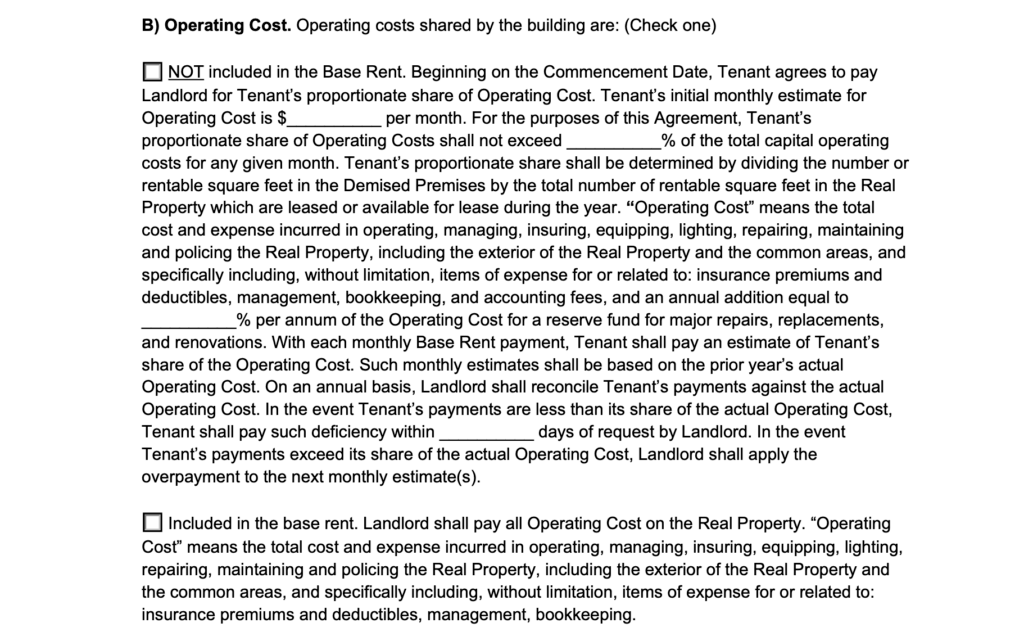
If the tenant underpays their share of the operating costs, specify the days the tenant must pay the amount due.
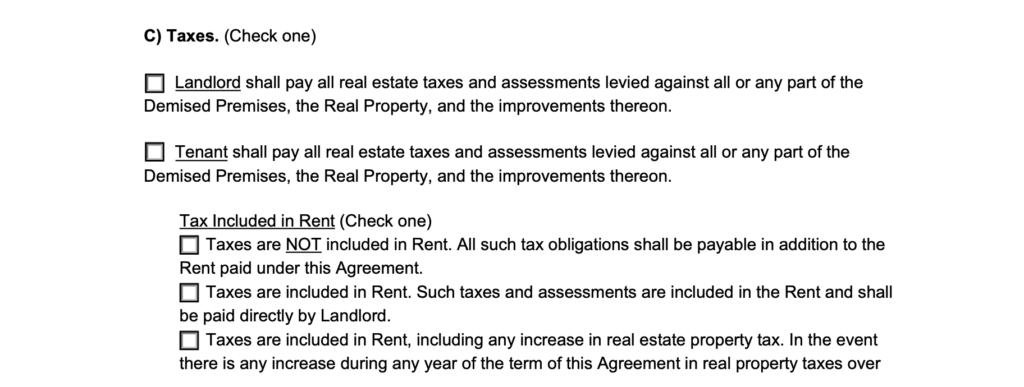
Taxes. State whether or not the tenant is responsible for real estate property tax and assessment payments. If yes, specify whether or not the base rent includes the real estate property taxes.
Past Due Payments – Provide the grace period (number of days) before a late charge is due if the tenant is late with rent payments. Specify whether the late charge will be a percentage of the monthly rent or a dollar amount per day.
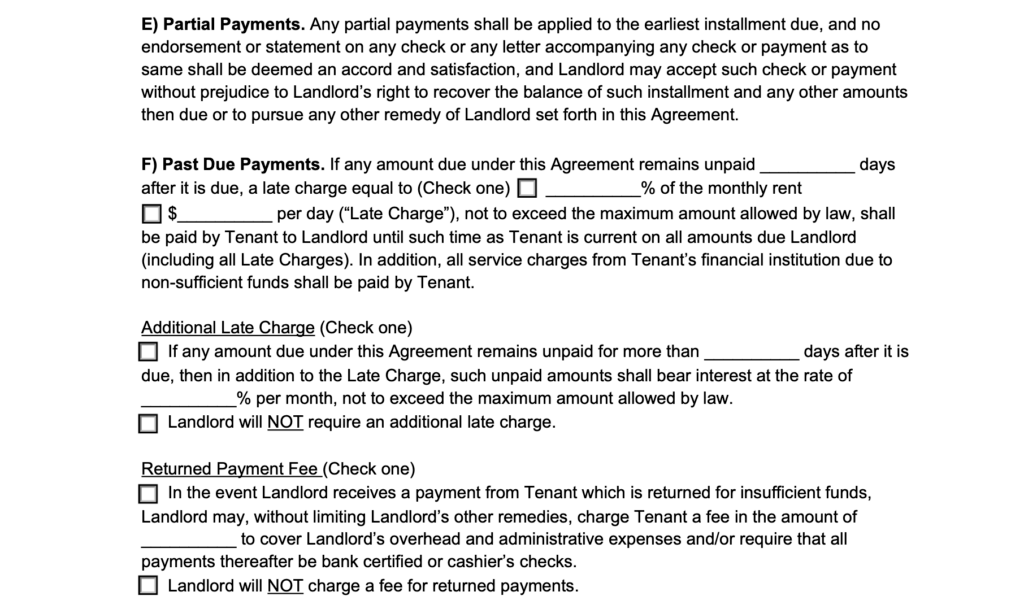
Additional Late Charges – You can choose whether or not to charge interest in addition to the late fee if the rent is more than a certain number of days late.
Security Deposit – Write the total dollar amount of the security deposit the tenant shall pay the landlord. Specify whether or not the security deposit will accrue interest.
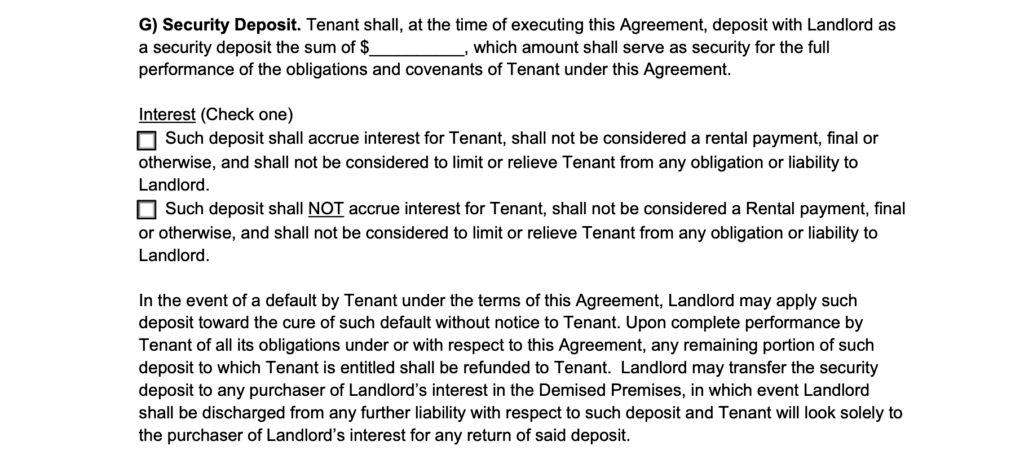
Remember that some states and cities require landlords to pay interest on security deposits.
Holding Over – If there is a holdover (the tenant stays on the property past the end of the lease term), the landlord may charge a specific amount over the base rent for the period past the expiration of the lease term.

State the number of times the base rent is due immediately.
Use and Occupancy. Enter the commercial or business purpose and the tenant’s use of the property.
Specify whether or not the landlord will provide janitorial services. Indicate whether or not the tenant agrees to these statements by selecting the appropriate and relevant statements.
Additionally, If the tenant agrees to the statement regarding no smoking within a certain distance from the property, state the length in feet.


Condition and Acceptance of Premises. The tenant has a specific number of days after moving in to notify the landlord of any defects discovered on the property. State the number of days the tenant has to provide notice.
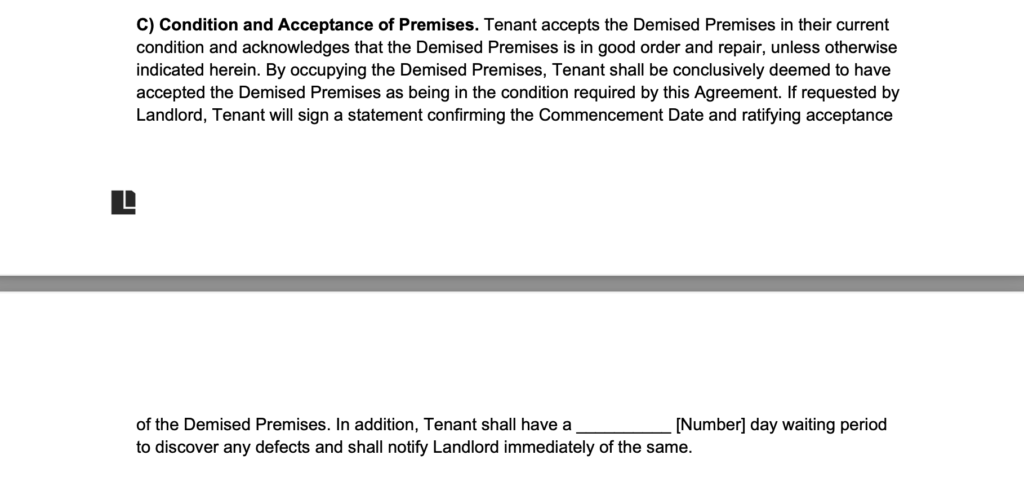
Right to Leasehold Improvements. Choose whether or not the tenant may make improvements to the property. If yes, state whether or not the tenant may remove their trade fixtures and equipment at the lease end.

Fixtures and Furnishings Provided by Landlord. Specify whether or not the landlord will provide any fixtures or furnishings. If yes, state the fixtures and furnishings supplied. You can write on any of your own.

Personal Property Taxes of Tenant. Specify whether the landlord or tenant will pay the personal property taxes on the fixtures and furnishings.
If the tenant is responsible for the taxes and needs to pay back the landlord for such taxes, state the number of days the tenant has to pay after receiving notice from the landlord.

Landlord’s Obligation to Repair and Maintain. Choose the items the landlord must repair and maintain on the property. You can write any other items.
Also, state whether or not the tenant is responsible for the costs of any maintenance, repairs, or replacements the tenant’s actions cause.
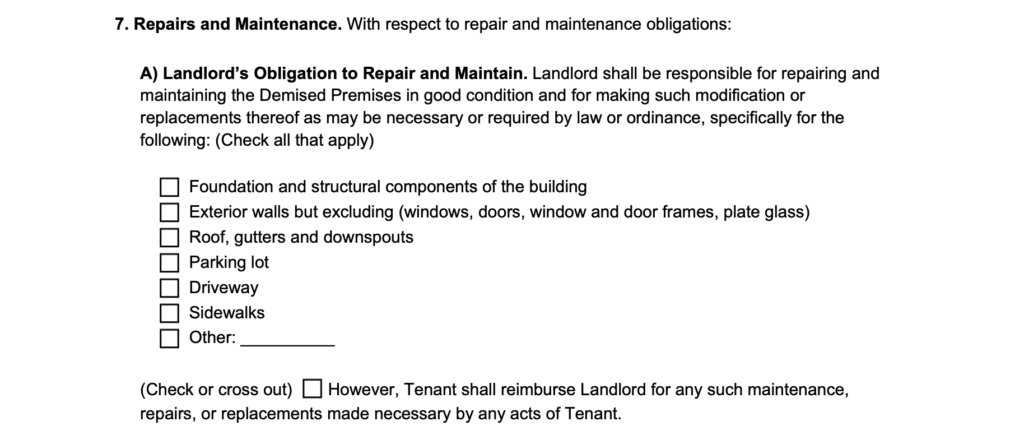
Tenant’s Obligation to Repair and Maintain. State the items the tenant is responsible for repairing and maintaining on the property. You can write any additional items.

Remodeling. State whether or not the tenant must obtain the landlord’s permission before painting, remodeling, or installing equipment, wires, or displays.

Liens. Specify the number of days after actual notice of the filing of a lien; in the event, the landlord files a lien on the property, the tenant has to release the lien.

Tenant’s Public Liability and Property Damage Insurance. The tenant must buy public liability and property damage insurance for the leased property. State whether or not the tenant must add the landlord as an additional insured on the policy.
Write if the policy will have a minimum aggregate policy or a limit of liability per occurrence.
Specify the minimum aggregate amount or minimum liability amount per occurrence. Also, state the required maximum deductible dollar amount.

Certificate of Insurance. Indicate the number of days the tenant has to provide written notice to the landlord that the insurance policy is facing cancelation.

Landlord’s Insurance. State whether or not the landlord’s property insurance on the building includes operating costs.

Exterior Sign. State whether or not the landlord must approve the tenant’s exterior business sign before installation. Specify whether the landlord or tenant is responsible for the cost of the business sign.
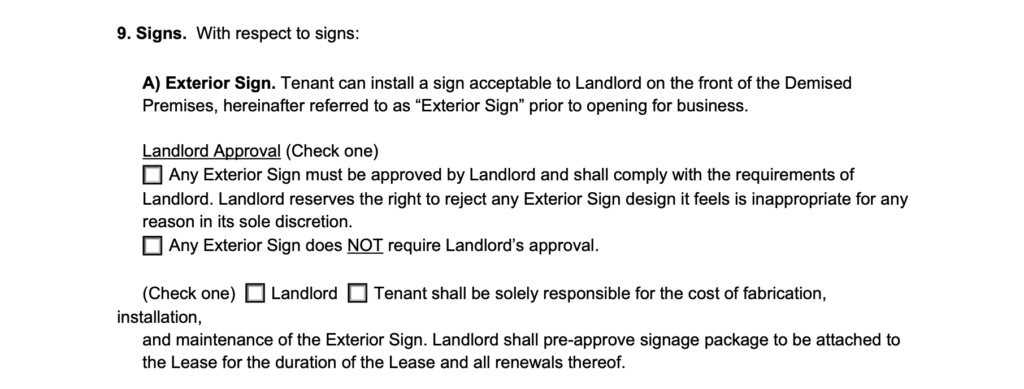
Other Signs. Note whether or not the landlord must approve any other signs, banners, or advertising visible from the outside of the property before installation.

Utilities. Specify the utilities the tenant must pay. You can write any other utilities not listed. Also, note the utilities the landlord will pay. You can write any utilities not listed.
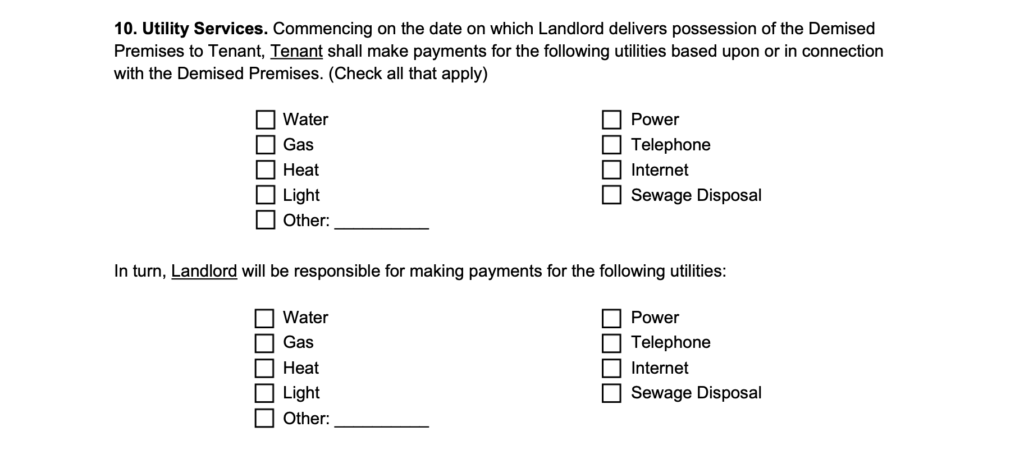 utility services section in a commercial lease agreement" width="1024" height="450" />
utility services section in a commercial lease agreement" width="1024" height="450" />
Fixtures and Equipment Installed by Tenant. State whether tenants, upon lease end, can remove the trade fixtures and equipment they installed.

Assigning and Subletting. Specify whether or not the tenant can sublease the property with the landlord’s prior approval.

Substantial Damage. Provide whether or not the cost of repair or replacement for substantial damage in the event of a fire or another disaster is measured by a percentage or dollar amount.
Specify the amount that the replacement value must exceed the cost of repairs.
Additionally, state the days after fire or disaster, the parties have to end the lease.
Partial Damage. State whether or not the landlord or tenant is responsible for repairs in the event of partial damage due to fire or another disaster.
Also, specify the days after receiving insurance payments; if fire insurance proceeds are insufficient to repair the premises, the landlord must end the lease.
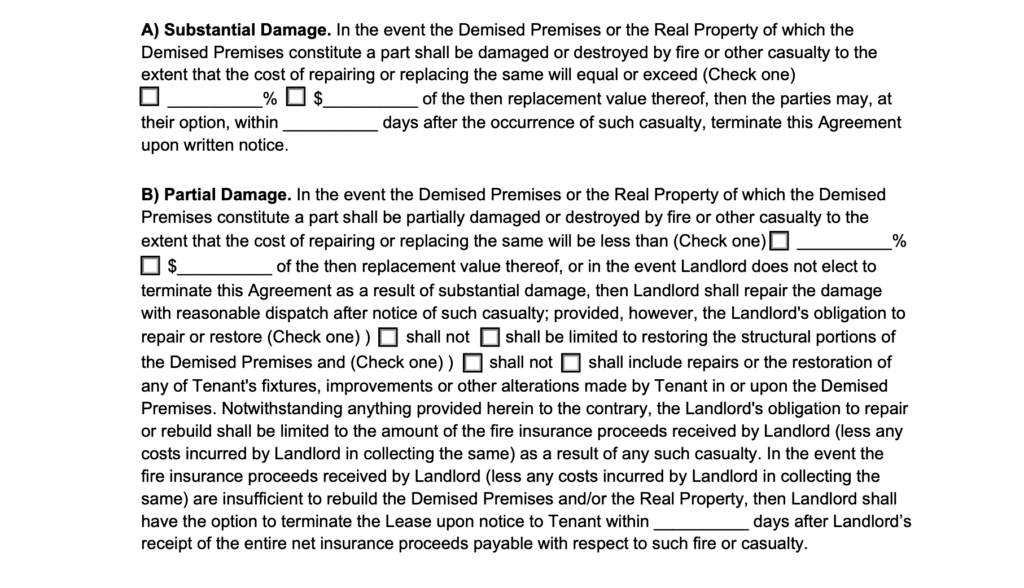
Condemnation of Demised Premises. State the percentage of the property or common area that must be taken if a part of the property is subject to eminent domain for the landlord to end the lease early.
Additionally, specify the number of days after the receipt of the compensation; in the event, the landlord is insufficiently compensated, the landlord has to end the lease early.

Rights in the Event of Default of Tenant. Specify the number of days after receipt of the landlord’s written notice the tenant has to pay rent or fix a problem.
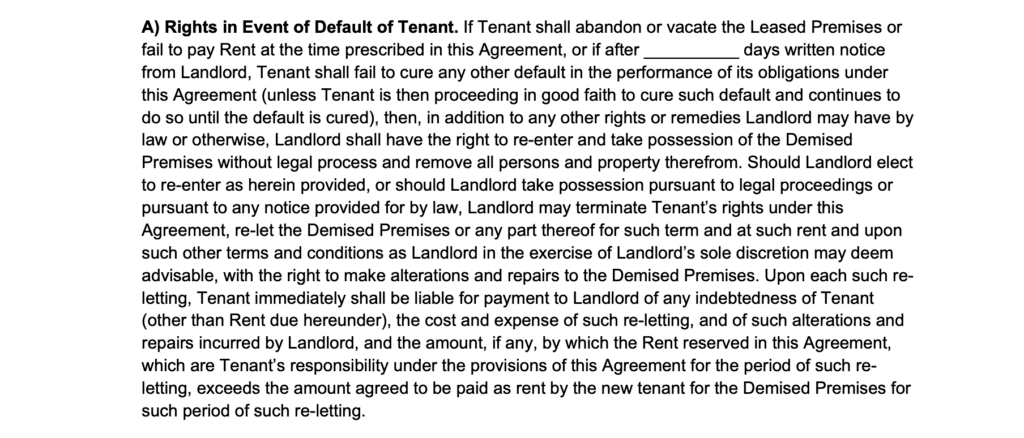
Default of Landlord. State the number of days after receipt of the tenant’s written notice the landlord has to fix a problem.
The landlord must make a reasonable faith effort to start fixing an issue that would reasonably take longer than a specific number of days. State the number of days to cure the problem.
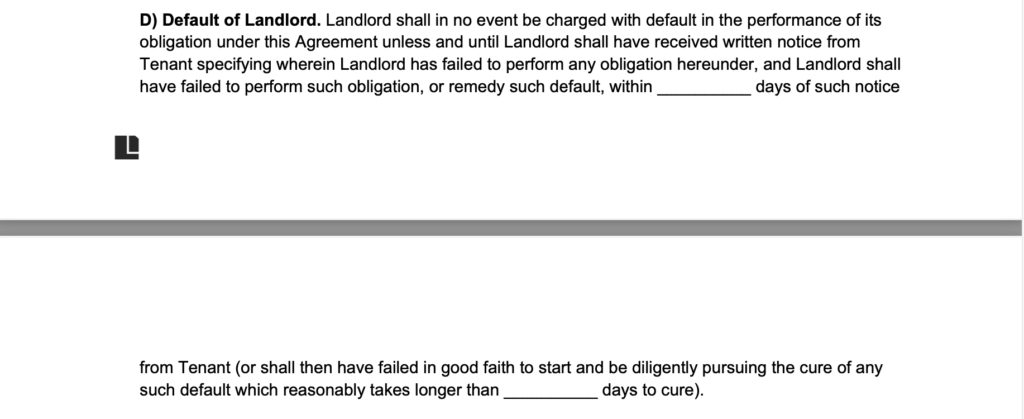
Governing Law. Choose the state’s laws that will govern the construction of this commercial lease agreement.

Dispute Resolution. Note whether the tenant and landlord will resolve disputes if there are any disputes through court litigation, binding arbitration, mediation, or mediation then arbitration.
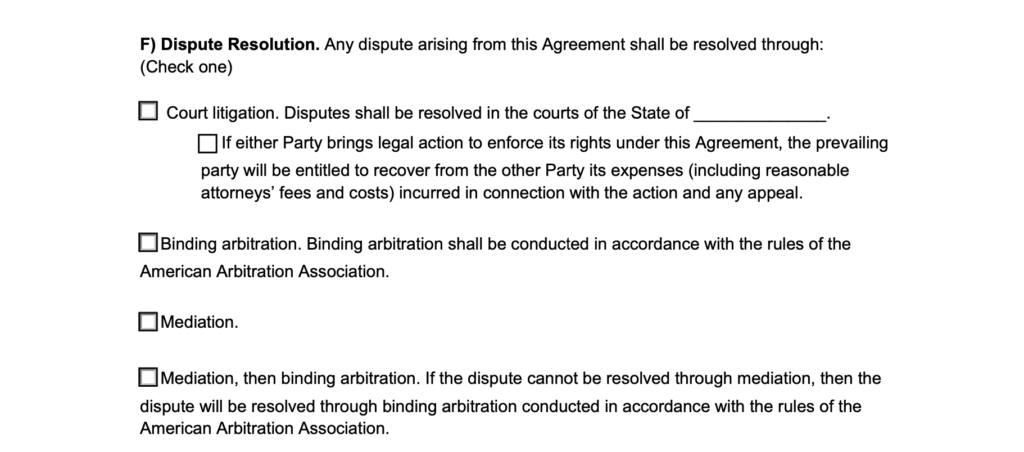
After you’ve finished writing your commercial lease agreement, save it as a PDF to finalize it and email it to the other party to sign. You can also print it out to have the tenant sign in person.
The following is an example of a commercial lease agreement. You can also download our template in PDF or Word format and complete it yourself.